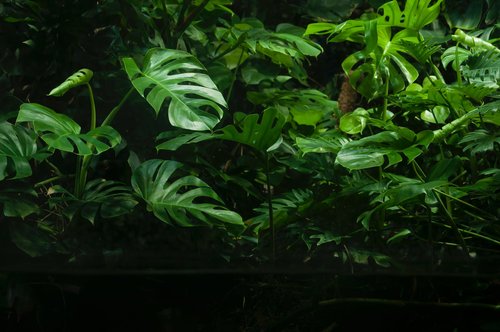
Published 2/17/2022, Updated 3/19/2024
Ellipsis Education understands that teachers are very often juggling many competing initiatives all at once. As a team made up of many former educators, we empathize with this reality. We have made it our mission to ease the burden for teachers by providing a curriculum that addresses multiple priorities while simultaneously promoting high-quality computer science learning. To that end, Ellipsis lessons are situated within real-world contexts and applications so that interdisciplinary connections can easily be made.

Ellipsis Education curriculum provides natural opportunities to reinforce important concepts across all domains of science. In the sections below, we will explain general connections that can be made, as well as provide specific examples from Ellipsis lessons.
Nature of Science standards typically relate to four broad categories:
Due to the very close relationship between the disciplines of computer science and science, there is a tremendous amount of overlap between topics that are covered within a computer science curriculum and the four categories listed above. Here, we will discuss a few ways teachers can take advantage of this overlap to support their students’ learning.
Each Ellipsis Education course includes lessons that help students explore STEM careers. These lessons provide excellent opportunities to overtly teach and reinforce the practice of science, as it is carried out by practitioners working in the field. For example, science standards might require students to understand that scientists communicate with one another and that scientists review and critique the work of others.
In a third-grade digital citizenship lesson that focuses on the career of a Statistician, students act as statisticians themselves and must gather and organize data that was collected by their peers. Teachers can support students in connecting their work to the work of real-world statisticians, and to the nature of the scientific endeavor, in which practitioners are continually questioning, discussing, and checking the evidence and reasoning provided by others.
Similarly, models and modeling are key concepts in both science and computer science education. In both disciplines, models are used to represent complex ideas, processes, and systems and modeling is used to explain relationships and make predictions. Teachers looking to support students in better understanding how models and modeling are used will recognize and appreciate opportunities to reinforce these concepts when they appear throughout Ellipsis Education curriculum.
In a sixth-grade coding lesson that supports students’ understanding of conditional statements, students code an algorithm to inquire about a user’s favorite ice cream flavor and respond to the user’s selection. This use of algorithmic thinking allows students to generalize a model about how conditional statements work and how they are used in code. The teacher can reinforce the connection to modeling by facilitating a discussion in which students recall how scientists and computer scientists use models to help them do their work.
Physical science standards vary from state to state, but generally fall into these broad domains:

From the construction and functioning of computers and software applications themselves to the ways in which objects interact within coding projects, the discipline of computer science presents numerous opportunities to make meaningful connections to physical science. Consider the following examples of how computer science learning can easily be connected to these important physical science concepts.
Science standards consistently require students to develop understanding of how forces can change the motion of objects. Ellipsis lessons support extensions to force and motion by requiring students to program objects to move, collide, or even change directions. Teachers can make overt connections to their grade-level appropriate force and motion standards by relating students’ coding actions to the real-life actions that would result in those same changes in motion.
In a fourth-grade coding lesson, students will use the coding concept of loops to program a game in which a dinosaur jumps over a series of rock obstacles. Teachers can make direct connections to the physical science concept by asking students what would happen if the dinosaur were to run into the rocks instead of jumping over them. This would lead to a natural conversation about how the force applied by the rock would cause a change to the dinosaur’s motion.
Students in almost every grade level will need to develop understanding that energy exists in many different forms. Students will explore energy in the forms of heat, light, sound, electricity, and mechanical energy. As students progress, they will also discover that energy can be transferred between objects or systems, and that energy can change from one form to another. Computers themselves provide an excellent opportunity for teachers to reinforce energy transfer and transformation concepts with their students.
In a seventh-grade unplugged lesson, students will discover that all computers use an input-storage-process-output model to process data and function as expected. They will build on their understanding of this model by simulating how it works during a collaborative activity. The teacher can draw connections to the physical science concepts of forms of energy and energy transformation by asking students to recall which types of energy are used in each step of the model. For example, if a keyboard is used as the input device, the initial form of energy is mechanical. Teachers can continue strengthening students’ understanding of this concept by asking them to diagram the energy transformations that take place throughout the input-storage-process-output model, and by facilitating conversations around why those transformations are necessary.
Life science concepts are typically organized into broad concepts that relate to living organisms. These concepts include:

Before digging into the connections that exist between the disciplines of life science and computer science, it’s worth considering that technology, on the whole, is entirely a human invention. Humans have innovated all kinds of tools, including computers, to solve problems and extend their own abilities. As a result, there is a close relationship between computers and human beings, one that lends directly to reinforcing important life science concepts.
Science standards within the concept of organization and development relate to the structure and function of living things and the growth and development of organisms. Students in early grades learn that certain structures within living things provide important functions and enable those living things to survive in their environments. These concepts develop into explorations of how single cells organize into sophisticated organs and organ systems, and how organisms interact with their environments. Discussions related to computers and computer functions provide an excellent opportunity for teachers to reinforce the organization of living things.
In a kindergarten unplugged lesson, students will explore that the brain is the control center for the human body. They will play a game that demonstrates the brain’s role in speech, movement, and thinking. Teachers will walk students through thinking about all of the important functions that the human brain carries out, so that students can then compare their brains to computers. This lesson allows for an overt and grade-level appropriate connection to the brain’s structure and function, which teachers can expand on as students continue learning about computers.
Science standards within the concept of organization and development relate to the structure and function of living things and the growth and development of organisms. Students in early grades learn that certain structures within living things provide important functions and enable those living things to survive in their environments. These concepts develop into explorations of how single cells organize into sophisticated organs and organ systems, and how organisms interact with their environments. Discussions related to computers and computer functions provide an excellent opportunity for teachers to reinforce the organization of living things.
In a seventh-grade digital citizenship lesson, students will learn that people are connected online when using social media applications. Through a kinesthetic, interconnected web game, students become aware of how people are connected on the Internet. Organization into communities and interconnectedness are ecological concepts which will provide a nice foundation for thinking about digital communities and the ways in which people connect online. The teacher can strengthen students’ understanding of the ecological principles at work here by asking students to relate this notion of community to one they have learned about before. From there, teachers and students can further explore similarities and differences between the ways people interact online and the ways in which living things interact in the physical world.
Earth and space science standards generally relate to these big ideas:

Earth and space science standards present opportunities for students to explore concepts related to Earth’s structures and processes, weather and climate, catastrophic events, gravity, the solar system, and the universe. While it may be less intuitive to connect these concepts to the discipline of computer science, there are a number of ways for teachers to extend on these concepts and allow students to deepen their understanding of science.
One of the earliest concepts students will learn about the structure of Earth is that it is composed of both solid surface and the oceans. These basic concepts will develop into a deeper study of the composition of Earth’s layers, its resources, and how the Earth is susceptible to change from outside forces. Students working in ScratchJr or Scratch will have plentiful opportunities to discuss the structure of Earth as they code projects in different environments. Students working with line coding may leverage their understanding of these science concepts to code simulations and models.
In a kindergarten coding lesson, students will apply their knowledge of writing algorithms to program a fish to swim across the ocean. Students will need to select the appropriate character (fish) and the appropriate background (ocean) from their ScratchJr platform so that they can meet the learning objectives of the lesson. Teachers can extend this to the earth and space science concept by asking students to compare the ocean to some of the other available backgrounds. This will provide a natural opportunity to help students compare Earth’s structures and to consider how the ocean supports different life forms than other places on Earth.
This topic includes big ideas about the Sun, Moon, and stars, particularly as they relate to the Earth. Students progress from making observations about the apparent motion of the stars across the night sky to understanding the basic principles of organization of the universe. The connections between computer science and these standards will be made similarly to those above, where younger students primarily explore them within the context of their coding environment, and older students represent them through coding applications.
In a 5th grade coding lesson, students will apply their understanding of forever loops and conditionals to create a solar system infographic. As they work through the lesson, they will need to recall basic facts about the organization of the bodies in the solar system, their relative motions, and their distinct physical characteristics. Teachers can further reinforce the associated science content standards by asking students to compare and contrast the properties of inner and outer planets, and by ensuring that students can properly distinguish between objects within the solar system.
Integrate other branches of science into your computer science instruction by downloading the free lesson below. In this lesson, students explore one of the many STEM careers that involve multiple domains of science.